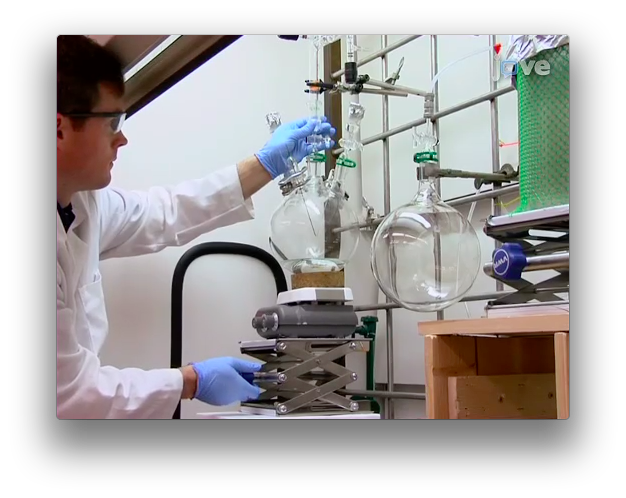JoVE introduces a 21st century adaptation of the Miller-Urey origin of life experiments.
Earlier this week, we published a modern approach to the famous 1953 experiment by Dr. Stanley Miller (then a graduate student at the University of Chicago) and Dr. Harold Urey that explored one of the most intriguing research questions facing scientists today—the origin of life on earth.

The experiment involves applying an electric discharge to a mixture of gases representing the early earth’s atmosphere and lightening in an effort to synthesize organic compounds, or rather, the chemical building blocks of life.
“Miller was hesitant to encourage people to repeat the experiment due to the risk of inducing an explosion,” says Eric Parker, explaining why he and his colleagues chose to publish their method in JoVE. Mr. Parker is currently a graduate student at the Georgia Institute of Technology. Their video article provides a step-by-step protocol for preforming spark-discharge experiments safely.
Currently, Mr. Parker and his colleagues are preparing to publish a second article comparing their novel spark-discharge experimental results to original samples from the 1958 Miller-Urey cyanamide spark-discharge study that followed the landmark paper.

Also worth noting, one of this video-article’s contributing scientists from NASA, Jeffrey Bada, was once a student of Dr. Miller’s.
Interested in executing some Miller-Urey type experiments of your own? Be sure to watch our peer-reviewed video first. After all your results could be, quite literally, explosive, and so you’ll want to take all of the necessary safety precautions.
Good luck, and don’t forget to cite JoVE!

